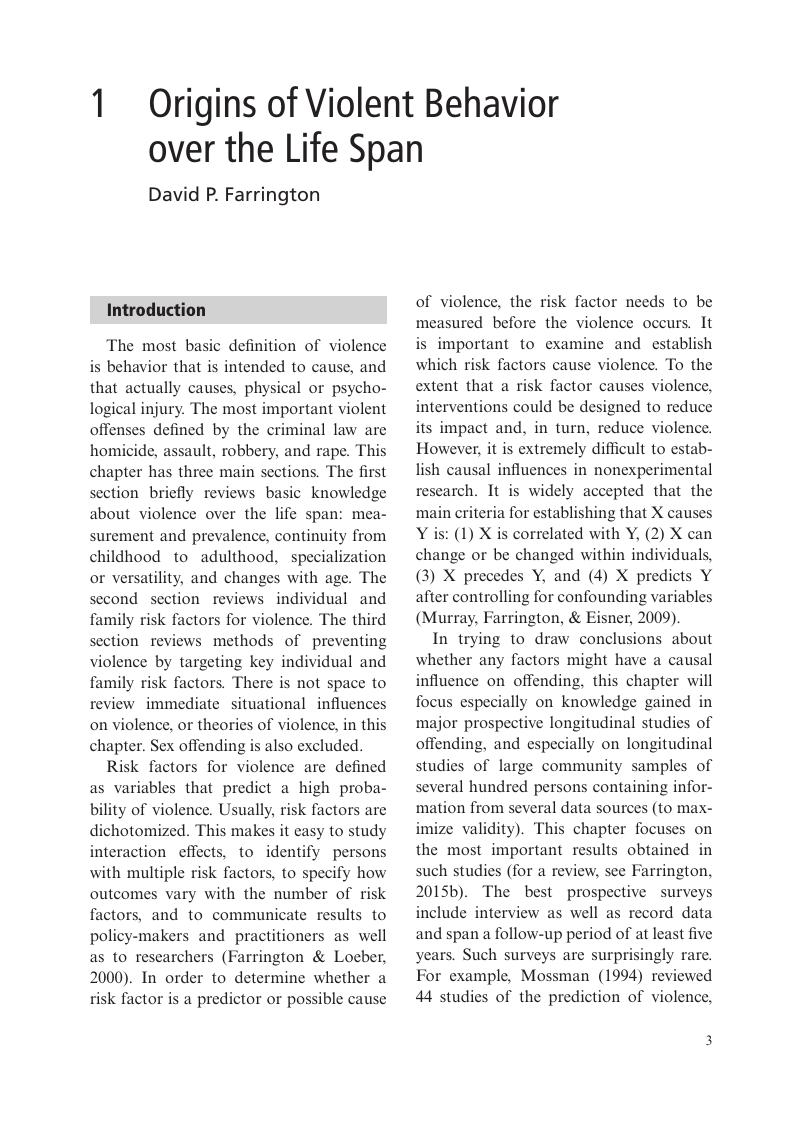Book contents
- The Cambridge Handbook of Violent Behavior and Aggression
- The Cambridge Handbook of Violent Behavior and Aggression
- Copyright page
- Dedication
- Contents
- Contributors
- Introduction: The Cambridge Handbook of Violent Behavior and Aggression
- Part I Introduction and Overview
- 1 Origins of Violent Behavior over the Life Span
- 2 Longitudinal Study of Personality and Social Development: Insights about Aggression after Five Decades
- 3 A Life-Course Model for the Development of Intimate Partner Violence
- 4 The Dark Violence Hybrid: The Cross-Cultural Validation of an Integrative Model
- Part II Biosocial Foundations of Violence and Aggression
- Part III Individual and Interpersonal Factors for Violence and Aggression
- Part IV Contextual Factors for Violence and Aggression
- Part V Looking Toward the Future
- Index
- References
1 - Origins of Violent Behavior over the Life Span
from Part I - Introduction and Overview
Published online by Cambridge University Press: 30 July 2018
- The Cambridge Handbook of Violent Behavior and Aggression
- The Cambridge Handbook of Violent Behavior and Aggression
- Copyright page
- Dedication
- Contents
- Contributors
- Introduction: The Cambridge Handbook of Violent Behavior and Aggression
- Part I Introduction and Overview
- 1 Origins of Violent Behavior over the Life Span
- 2 Longitudinal Study of Personality and Social Development: Insights about Aggression after Five Decades
- 3 A Life-Course Model for the Development of Intimate Partner Violence
- 4 The Dark Violence Hybrid: The Cross-Cultural Validation of an Integrative Model
- Part II Biosocial Foundations of Violence and Aggression
- Part III Individual and Interpersonal Factors for Violence and Aggression
- Part IV Contextual Factors for Violence and Aggression
- Part V Looking Toward the Future
- Index
- References
Summary

- Type
- Chapter
- Information
- Publisher: Cambridge University PressPrint publication year: 2018
References
- 13
- Cited by



